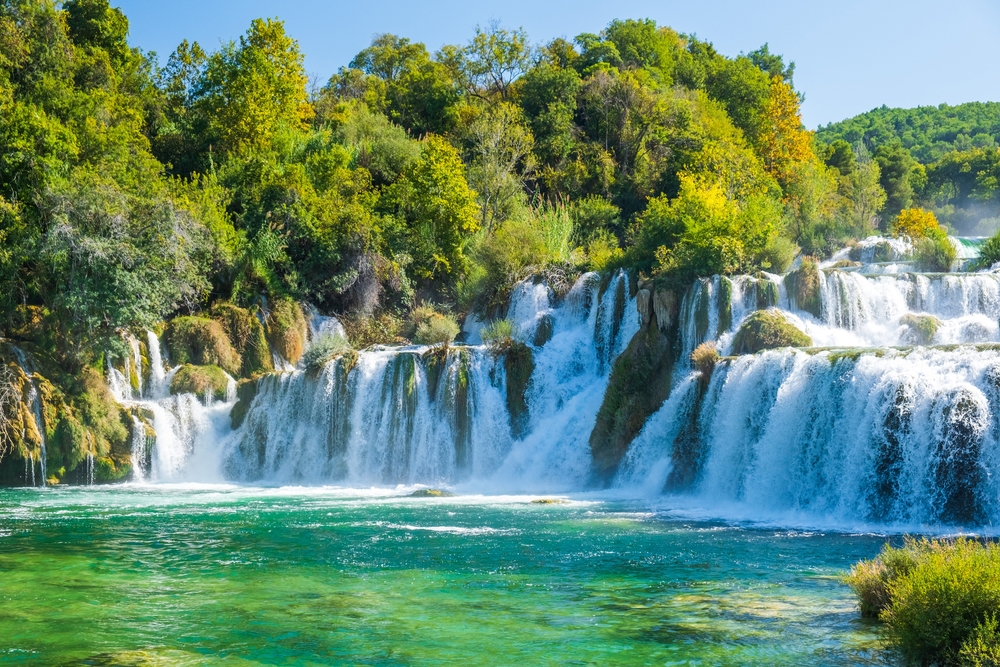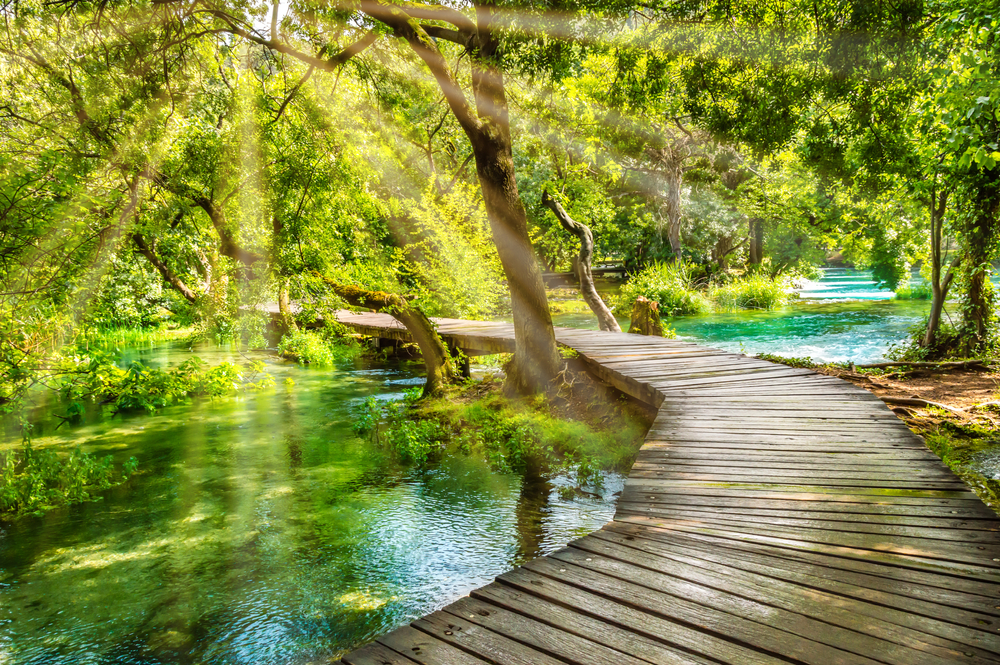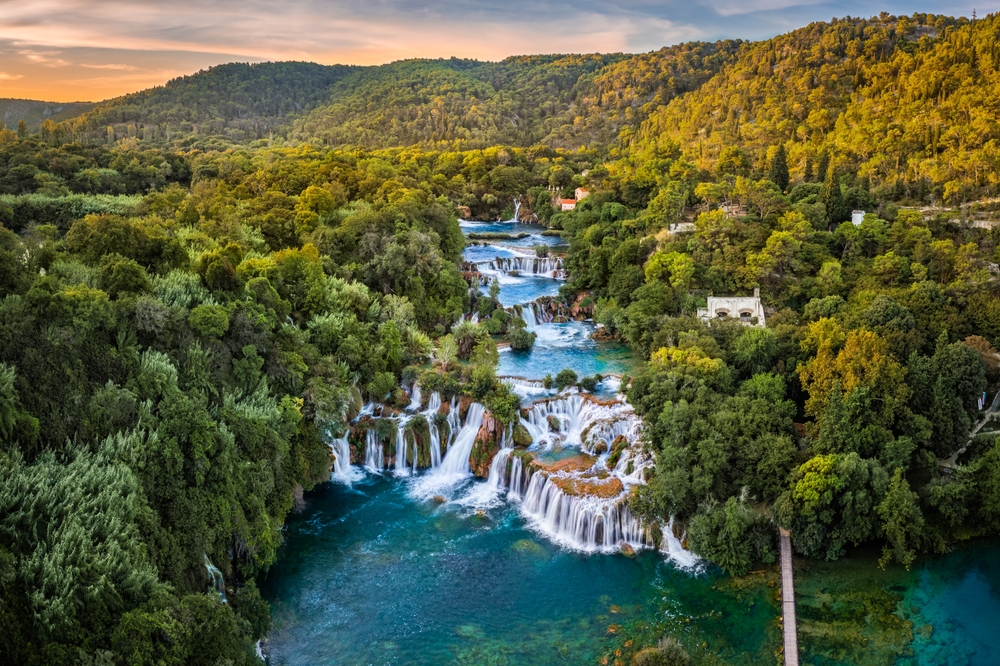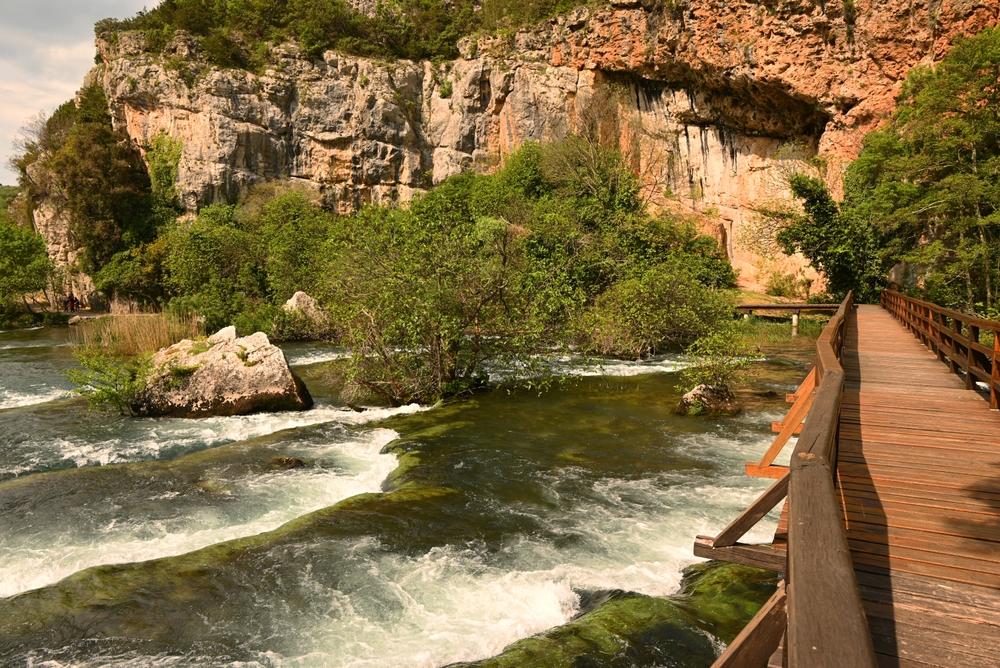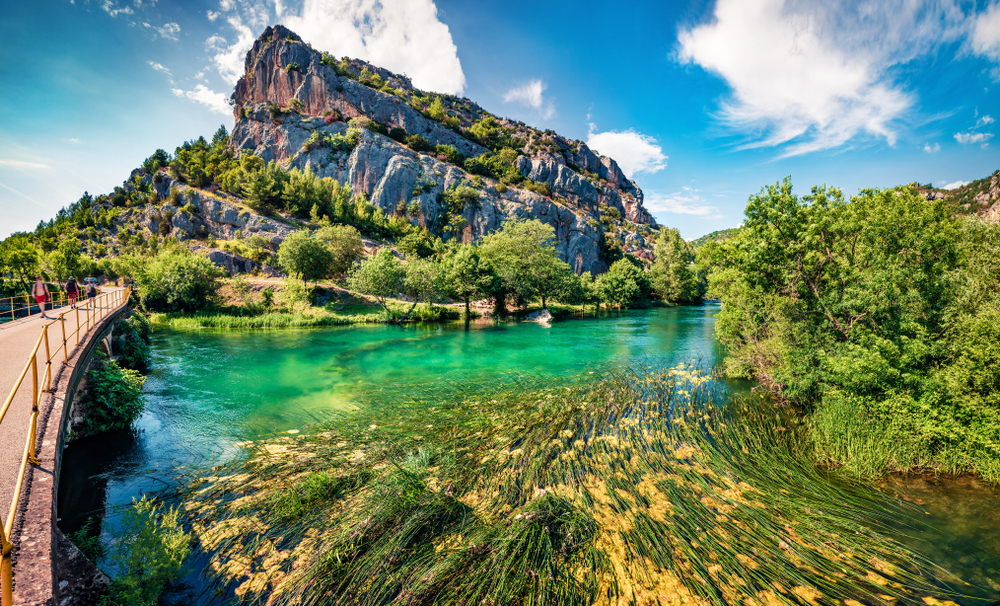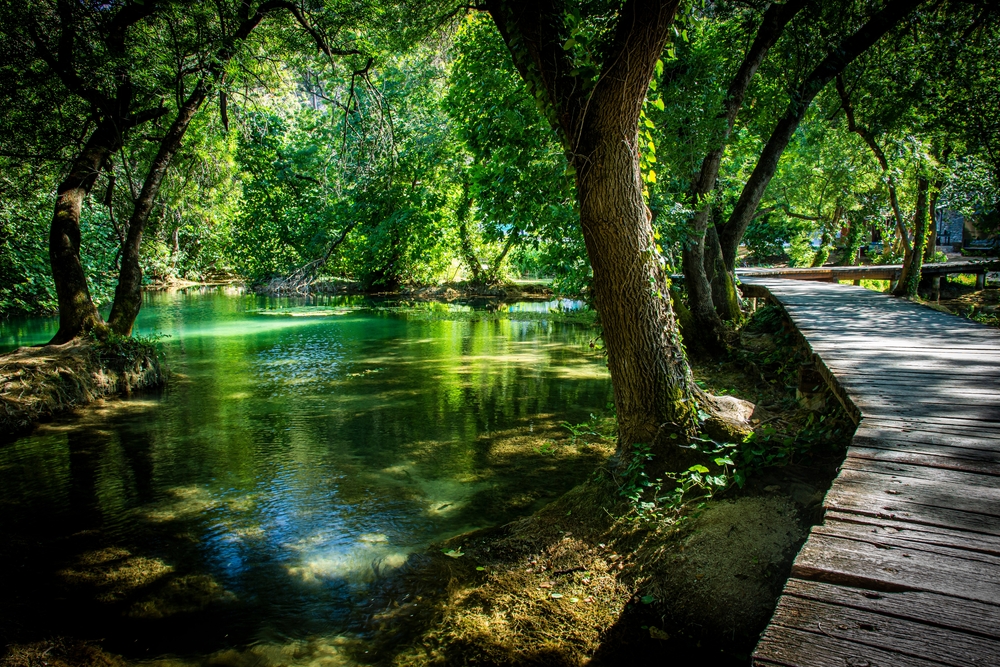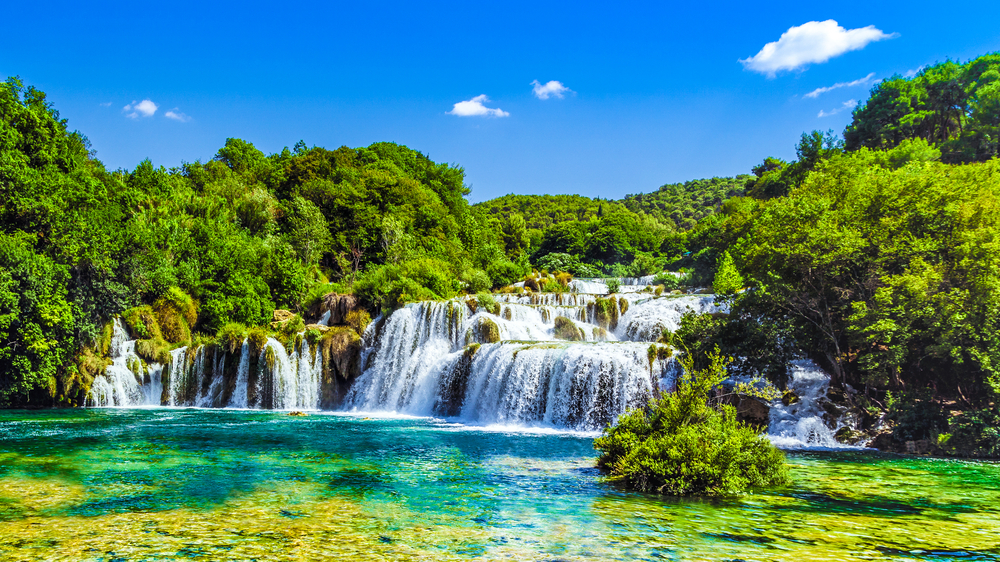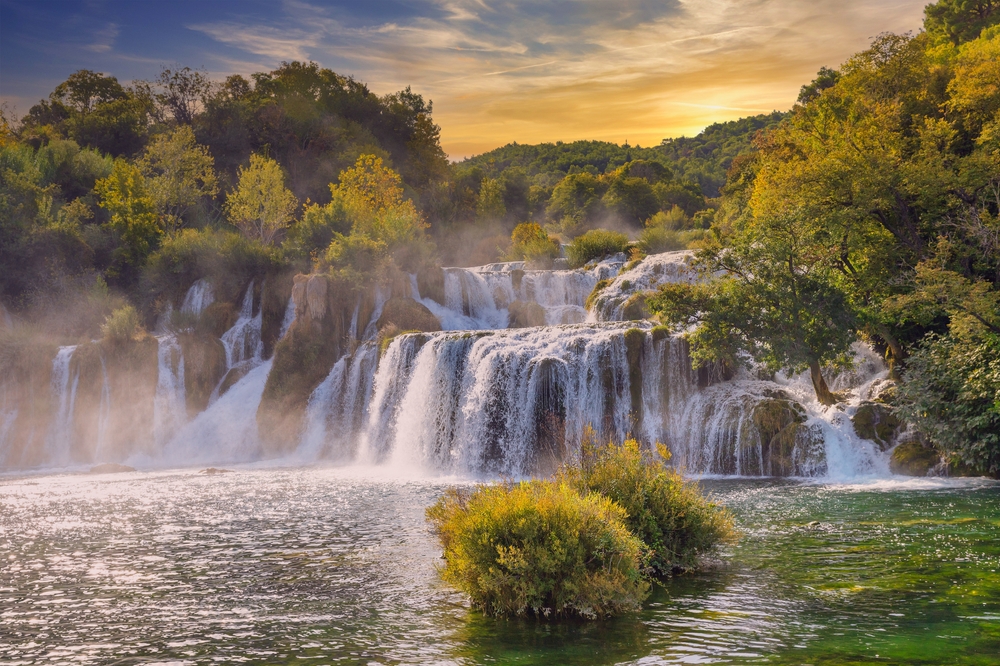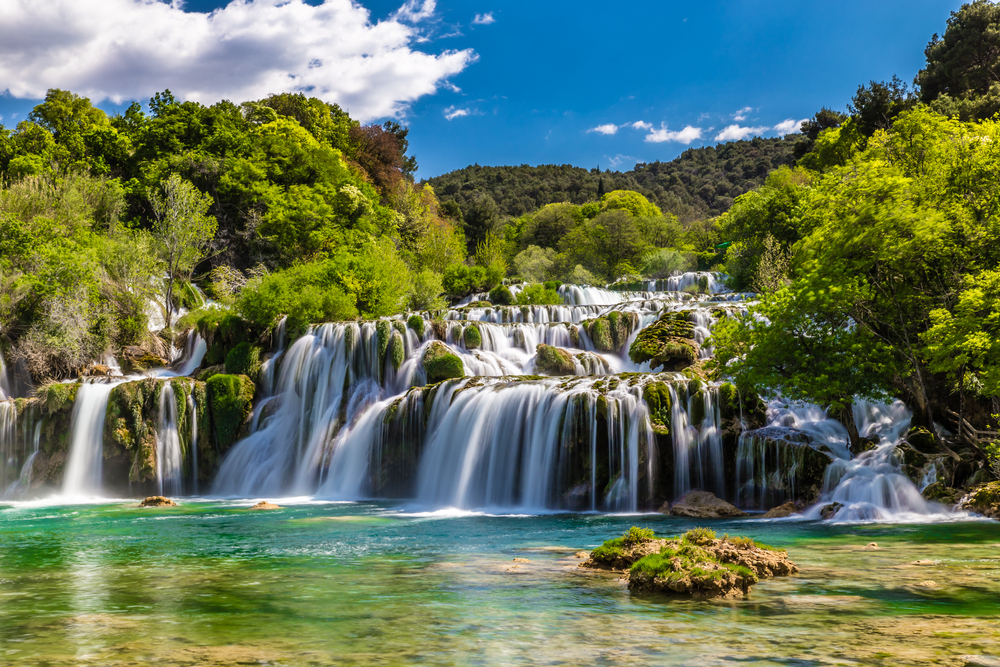Krka Overview
Krka National Park (in Croatian: Nacionalni park Krka) is located in southern Croatia, along the Krka River in the Šibenik-Knin County. Established in 1985, the park covers an area of approximately 42 square miles (109 square kilometers). Krka National Park is renowned for its stunning waterfalls, rich biodiversity, and cultural heritage, making it one of the most visited national parks in Croatia.
The landscape of Krka National Park is dominated by the Krka River, which winds through the park’s gorges, creating a series of magnificent waterfalls and cascades. The most famous of these waterfalls is Skradinski Buk, a massive, multi-tiered cascade that is considered one of the most beautiful natural sights in Croatia. Another prominent feature is the Roški Slap, another scenic waterfall further upstream. The river also forms tranquil lakes and islands, offering picturesque settings throughout the park. Limestone cliffs and deep canyons add to the dramatic landscape.
The vegetation in Krka National Park is a mix of Mediterranean and continental flora. The park is home to more than 1,000 species of plants, including aromatic herbs, wildflowers, and forests of oak, ash, and willow. The park’s diverse habitats range from riverine forests to rocky landscapes, supporting a wide variety of plant life, particularly in the fertile valleys surrounding the river.
The wildlife in Krka National Park is equally diverse. The park is home to several species of mammals, including otters, wild boars, and badgers. Birdlife is particularly rich, with over 200 species recorded, including the golden eagle, griffon vulture, and herons. The river and its lakes are teeming with fish species, including the endemic Krka trout. Krka National Park’s breathtaking waterfalls, unique flora, and rich wildlife make it a natural gem in Croatia’s Dalmatian region.
Park Map
Krka National Park Highlights
Engaging Krka National Park
Related National Parks More Croatia
Sources
- Croatia, Krka National Park, https://croatia.hr/en-gb/nature/krka, retrieved August 2024.
- Jana in the World, Guide to Krka, https://www.janaintheworld.com/8-2022/guide-to-krka-national-park-places-you-cannot-miss-and-a-waterfall-restaurant, retrieved August 2024.
- Lonely Planet, Krka National Park, https://www.lonelyplanet.com/croatia/krka-national-park, retrieved August 2024.
- National Park Krka, Park Site, https://www.npkrka.hr/en_US/, retrieved August 2024.
- Visit Croatia, Krka National Park, https://www.visit-croatia.co.uk/croatia-destinations/north-dalmatia/krka-national-park/, retrieved August 2024.
- Wikipedia, Krka National Park, https://en.wikipedia.org/wiki/Krka_National_Park, retrieved August 2024.








































































